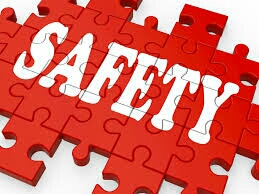Information
-
Company/Branch
-
Location (Service Site/Branch)
-
Conducted on
-
Done by
-
Job Title
-
Type of work observed
-
Name of Person(s) involved
-
Job title
Good Storage Practices
-
Ventilation adequate? Force ventilation in place? No signs of dampness
-
Stand fan, wall fan, exhaust fan and etcs, in good working conditions
-
Lighting is enough?
-
Materials, equipment and tools are stored at least 0.5m away from lighting and sprinkler.
-
Materials, equipment and tools are stored separately (by room/ section) and stored correctly by class and category (Pesticide - Class 1 to 4, Equipment, Safety Materials) etcs.
-
No heavy material/ equipment at high level
-
All chemicals agents are stored on rack, above the floor area.
-
Pesticides and RTU rodenticides should be physically stored separately.
-
RTU rodenticides must be kept within air tight containers.
-
Termites bait and fresh filter canister should be stored in another area or section. Away from pesticide vapor contamination.
Housekeeping/ Upkeep
-
Floor is cleaned regularly.
-
Floor in good conditions, no crack, not uneven. Coating (if any) in good conditions.
-
No spillage on the floor, racks and etcs.
-
No expired and unlabeled chemical product
-
Any unfamiliar/unauthorized product (that is not in APL/consumable list)
-
Storage rack condition, no bent, rust or damage.
-
Ladder conditions: proper mid support, rubber base and no damage.
-
Trolley, jack or other lifting equipment in good working conditions
-
Proper waste bin is provided.
-
An area is allowed or set out for waste or empty containers and materials held for disposal, and materials for repair. Area is properly labelled.
-
No excessive accumulation of used materials at the store eg batteries and cans.
-
Waste are regularly cleared / recycled.
-
Where waste materials are recycled, there are proper and labelled segregation bins. No mixing of materials observed in the bins.
-
Practice 1st in 1st out (FIFO)
Preparation and Other Specific Areas
-
An area is set out for chemical agent mixing or preparation. Area is separate from storage area by space/room/partition etc safe and properly labelled.
-
Clean water facilities at the store or near by for cleaning of hands, eye and body and in working condition.
-
Soap or cleansing agents provided.
Personal Protective Equipment
-
Safety helmet provided and kept in clean, good condition
-
Mask provided and kept in clean, good condition In bag/container
-
Respirator & cartridges provided and maintain well & clean in bag / container
-
Hand gloves provied and kept in clean, good condition bin bag/container
-
Ear plugs provided and kept in clean, good condition in bag or container
-
Safety glasses, face shield provided and maintain well & clean in bag / container
-
Safety harness and life line provided and kept in clean, good condition
-
Apron , coveralls provided and kept in clean, good condition
Store Rules
-
Safety Shoes worn by staff working at the the stores.
-
Suitable PPE (personal protective equipment) is worn when handling chemical agents eg safety gloves, safety mask/respirator, apron
-
No eating & drinking at the store. Drinking bottle and leftover food at the store are not observed.
-
No smoking. Leftover cigarette butts on the floor are not observed.
Security and Safety
-
If a window to the exterior is present, it must be made secured to prevent force entry e.g secured by metal bars.
-
Walkway is sufficient for safe access, not obstructed.
-
Access to the store is controlelled for authorize person only. Under lock and key when not in use . Under control by an assigned person
-
Fire extinguisher in place and sufficient in numbers. Atleast 1 near each entrance/exit. Powder / ABC type should be provided.
-
Extinguisher inspected regularly by qualified contractor. Inspection label updated.
-
Spill kit with adequate stock - dry sand/vermiculite (for pesticides), absorbent pads or rags, waste bags with lies, putty to seal leaks, dust pan
-
First Aid Box : clean condition, enough first aid stock, kept at easily access area
-
First Aid Box Checklist & First Aid Register in place. Checklist is updated.
Signage and Label
-
Signage & Labels : in good condition, at proper location, easily noticed.
-
Store clearly labelled eg. "Pesticides Store" , "Equipment Store" at the store entrance and other separate compartments
-
No smoking sign, Authorized Personnel Only signs, Wear Safety Shoes signs displayed at every store entrance
-
Emergency Contact Numbers posted clearly e.g fire bridge, branch managers
-
Storage rack are properly labelled for storage by class/category
-
All chemical agents (liquid, powder, aerosol, ,granulars etc) are properly capped and enclosed. All properly labelled and label legible.
-
Spill control kit clearly labelled.
-
Stock cards, inventory records are in place and updated
-
MSDS are in place, readily accessible and updated. Kept near to entrance/exit area as far as possible.
-
Audit acknowledged by
-
Auditing officer
Store Documents
-
License for pesticides storage
-
Stock card
-
Stock check record
-
Store inspection record
-
Equipment maintenance schedule
-
Equipment maintenance record
-
Equipment inspection record
-
Delivery Order record
-
Stock requisition form
Equipment List and Condition
-
Number of thermal fogger (汽油喷雾器)
-
Condition of the thermal fogger
-
Number of electronic fogger (电子喷雾器)
-
Condition of the electronic fogger
-
Number of ULV mister
-
Condition of the ULV mister
-
Number of handheld fogger (手提式)
-
Condition of handheld fogger
-
Number of fogger (烟雾器)
-
Condition of fogger
-
Number of cart fogger (手推式喷雾器)
-
Condition of cart fogger










